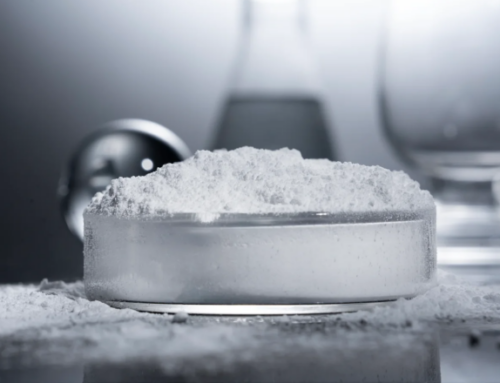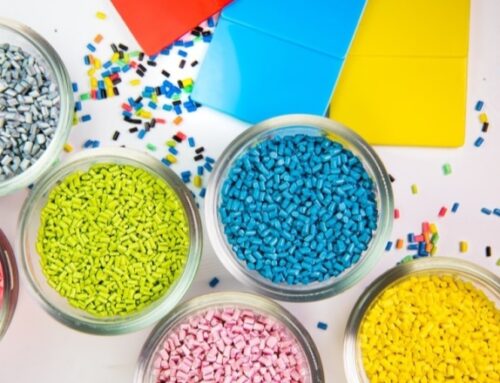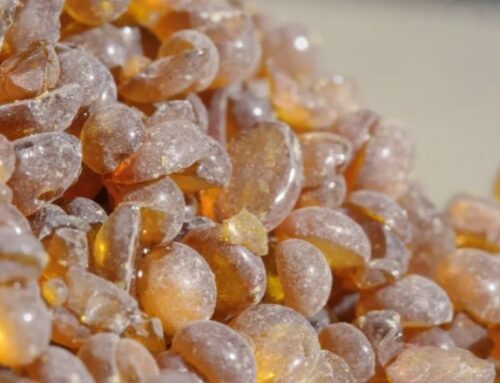As the only component that comes into contact with the ground, the performance of tires directly affects the driving safety, comfort, and fuel economy of vehicles. The performance of tires largely depends on the various additives added during their production process. These additives play a crucial role in tire manufacturing, as they can improve the physical, chemical, and processing properties of tires. This article will provide a detailed introduction to the six major additives for tires and their functions.

Ⅰ Carbon black
1. Properties of carbon black
Carbon black is a black powdery substance mainly composed of carbon elements. It has a high specific surface area and adsorption capacity, and can form a good bond with rubber molecules. The particle size, structure, and surface properties of carbon black can affect its performance in tires.

2. The role of carbon black in tires
(1)Enhance the strength of rubber
Carbon black can form physical and chemical bonds with rubber molecules, thereby enhancing the strength and wear resistance of rubber. Adding an appropriate amount of carbon black in the manufacturing process of tires can improve their performance indicators such as tensile strength, tear strength, and hardness.
(2)Improve the wear resistance of tires
The high hardness and wear resistance of carbon black enable tires to better resist road wear during driving, extending the service life of tires.
(3)Improve the conductivity of tires
Carbon black has certain electrical conductivity, and adding it to tires can improve their conductivity, prevent the accumulation of static electricity, and reduce the risk of tire fires.
(4)Adjust the hardness and elasticity of the tire
By adjusting the amount and type of carbon black, the hardness and elasticity of the tire can be adjusted to meet different usage needs. For example, in high-performance tires, it is necessary to use high hardness carbon black to improve the handling performance of the tire; In comfort tires, it is necessary to use low hardness carbon black to improve the cushioning performance of the tire.
Ⅱ White carbon black
1. The properties of white carbon black
White carbon black is a white amorphous powder substance mainly composed of silicon dioxide. It has a high specific surface area and adsorption capacity, and strong binding ability with rubber molecules. The particle size, structure, and surface properties of white carbon black can affect its performance in tires.

2. The role of white carbon black in tires
(1)Reduce the rolling resistance of tires
White carbon black can form a special binding structure with rubber molecules, thereby reducing the rolling resistance of tires. Adding an appropriate amount of white carbon black in the tire manufacturing process can improve the fuel economy of the tire and reduce the energy consumption of the vehicle.
(2)Improve the anti-skid performance of tires
The surface of white carbon black has hydrophilicity, which can form a water film between the tire and the road surface, thereby improving the tire’s skid resistance. When driving on rainy days, using tires containing white carbon black can better maintain the stability and handling performance of the vehicle.
(3)Improve the wear resistance of tires
The high hardness and wear resistance of white carbon black enable tires to better resist road wear during driving, extending the service life of tires. Compared with carbon black, white carbon black has a more significant effect on improving the wear resistance of tires.
(4)Adjust the hardness and elasticity of the tire
By adjusting the amount and type of white carbon black, the hardness and elasticity of the tire can be adjusted to meet different usage needs. For example, in high-performance tires, it is necessary to use high hardness white carbon black to improve the handling performance of the tire; In comfort tires, it is necessary to use low hardness white carbon black to improve the cushioning performance of the tire.
Ⅲ Rubber accelerator
1. Properties of rubber accelerators
Rubber accelerator is a chemical substance that can accelerate the vulcanization speed and improve the vulcanization efficiency of rubber. It has a wide variety of types, which can be classified into thiazoles, thiurams, sulfonamides, etc. based on their chemical structure and mechanism of action. The activity, stability, and toxicity of rubber accelerators can affect their performance in tires.

2. The role of rubber accelerator in tires
(1)Accelerate the vulcanization speed of rubber
Rubber accelerators can react chemically with rubber molecules and vulcanizing agents, thereby accelerating the vulcanization rate of rubber and shortening the vulcanization time. Adding an appropriate amount of rubber accelerator in the tire manufacturing process can improve production efficiency and reduce production costs.
(2)Improve the performance of vulcanized rubber
Rubber accelerators can improve the physical, chemical, and processing properties of vulcanized rubber. For example, adding thiazole accelerators can improve the tensile strength, tear resistance, and hardness of vulcanized rubber; Adding thiuram type accelerators can improve the heat resistance and aging resistance of vulcanized rubber.
(3)Adjust the hardness and elasticity of the vulcanized rubber
By adjusting the dosage and type of rubber accelerator, the hardness and elasticity of the vulcanized rubber can be adjusted to meet different usage needs. For example, in high-performance tires, it is necessary to use high hardness accelerators to improve the handling performance of the tire; In comfort tires, it is necessary to use low hardness accelerators to improve the cushioning performance of the tire.
Ⅳ Anti-aging agent
1. Properties of anti-aging agents
Antioxidants are chemical substances that can slow down the aging rate of rubber and extend its service life. It has a wide variety of types, which can be classified into amines, phenols, heterocycles, etc. based on their chemical structure and mechanism of action. The antioxidant properties, stability, and toxicity of antioxidants can affect their performance in tires.

2. The role of anti-aging agents in tires
(1)Delay the aging rate of rubber
Antioxidants can react chemically with rubber molecules and oxygen in the air, thereby preventing the oxidative aging process of rubber. Adding an appropriate amount of anti-aging agent during the tire manufacturing process can extend the service life of the tire and improve its reliability.
(2)Improve the heat resistance and aging resistance of rubber
Antioxidants can improve the heat resistance and aging resistance of rubber, enabling it to maintain good performance even in high temperatures and harsh environments. For example, adding phenolic anti-aging agents can improve the heat resistance and aging resistance of rubber, making it less prone to softening and cracking at high temperatures.
(3)Protect rubber from UV damage
Antioxidants can absorb ultraviolet radiation, thereby protecting rubber from damage caused by ultraviolet radiation. Adding an appropriate amount of anti-aging agent during the manufacturing process of tires can improve their weather resistance and extend their service life.
Ⅴ Plasticizer
1. Properties of plasticizers
Plasticizer is a chemical substance that can increase the plasticity of rubber, reduce its hardness and elastic modulus. It has a wide variety of types, which can be divided into phthalates, aliphatic dicarboxylic acid esters, phosphate esters, etc. based on their chemical structure and mechanism of action. The plasticizing effect, stability, and toxicity of plasticizers can affect their performance in tires.

2. The role of plasticizers in tires
(1)Increase the plasticity of rubber
Plasticizers can be inserted between rubber molecular chains, thereby increasing the plasticity and flowability of rubber. Adding an appropriate amount of plasticizer in the manufacturing process of tires can improve the processing performance of rubber and reduce production costs.
(2)Reduce the hardness and elastic modulus of rubber
Plasticizers can reduce the hardness and elastic modulus of rubber, making it softer and easier to process. In comfort tires, it is necessary to use an appropriate amount of plasticizer to improve the cushioning performance and ride comfort of the tire.
(3)Improve the cold and heat resistance of rubber
Plasticizers can improve the cold and heat resistance of rubber, enabling it to maintain good performance in both low and high temperature environments. For example, adding fatty dicarboxylic acid ester plasticizers can improve the cold resistance of rubber, making it less prone to hardening and brittle cracking at low temperatures; Adding phosphate plasticizers can improve the heat resistance of rubber, making it less prone to softening and decomposition at high temperatures.
Ⅵ Sulfur
1. The properties of sulfur
Sulfur is a yellow solid substance mainly composed of sulfur element. It has high reactivity and can undergo chemical reactions with rubber molecules to form cross-linked structures. The particle size, purity, and activity of sulfur can affect its performance in tires.

2. The role of sulfur in tires
(1)Make rubber undergo vulcanization reaction
Sulfur is an essential chemical substance in the process of rubber vulcanization. It can react chemically with rubber molecules to form cross-linked structures, thereby transforming rubber from a plastic state to an elastic state. Adding an appropriate amount of sulfur during tire manufacturing can improve performance indicators such as tire strength, wear resistance, and heat resistance.
(2)Adjust the performance of vulcanized rubber
By adjusting the amount and type of sulfur, the performance of the vulcanized rubber can be adjusted to meet different usage needs. For example, in high-performance tires, it is necessary to use highly active sulfur to improve the handling performance of the tires; In comfort tires, low activity sulfur is needed to improve the cushioning performance of the tire.
(3)Improve the heat resistance and aging resistance of tires
Sulfur can form a stable cross-linked structure with rubber molecules, thereby improving the heat resistance and aging resistance of tires. In high temperature and harsh environments, using tires containing an appropriate amount of sulfur can better maintain the stability and handling performance of the vehicle.
Ⅶ The development trend of tire additives
With the continuous improvement of people’s awareness of environmental protection, the environmental protection of tire additives will become the future development trend. Future tire additives will pay more attention to environmental performance, reducing pollution and harm to the environment. For example, developing environmentally friendly rubber accelerators and anti-aging agents such as lead-free, cadmium free, and mercury free; Develop biodegradable plasticizers, etc.
With the continuous development of the automotive industry, the performance requirements for tires are also increasing. In the future, tire additives will pay more attention to high-performance and improve various performance indicators of tires. For example, developing highly active and highly dispersed carbon black and white carbon black; Develop new rubber accelerators and anti-aging agents to improve the strength, wear resistance, and heat resistance of vulcanized rubber; Develop high-performance plasticizers to improve the cold and heat resistance performance indicators of rubber.
Future tire additives will focus more on multifunctionality, where one additive can have multiple functions simultaneously. For example, developing carbon black and white carbon black that not only enhance rubber strength but also reduce tire rolling resistance; Develop anti-aging agents that have both anti-aging and flame retardant functions.
The six major additives for tires – carbon black, white carbon black, rubber accelerator, anti-aging agent, plasticizer, and sulfur – play a crucial role in tire manufacturing. They can improve the physical, chemical, and processing properties of tires, enhancing their quality and performance. With the continuous advancement of technology and the increasing awareness of environmental protection among people, the development trend of tire additives will pay more attention to environmental protection, high performance, and multifunctionality. Future tire additives will provide stronger support for the development of the tire industry, driving it towards a higher level.
Article source: www.xianjichina.com
M&J International Trading Co., Ltd





